Where is the Best Place in Germany for Christmas Markets?
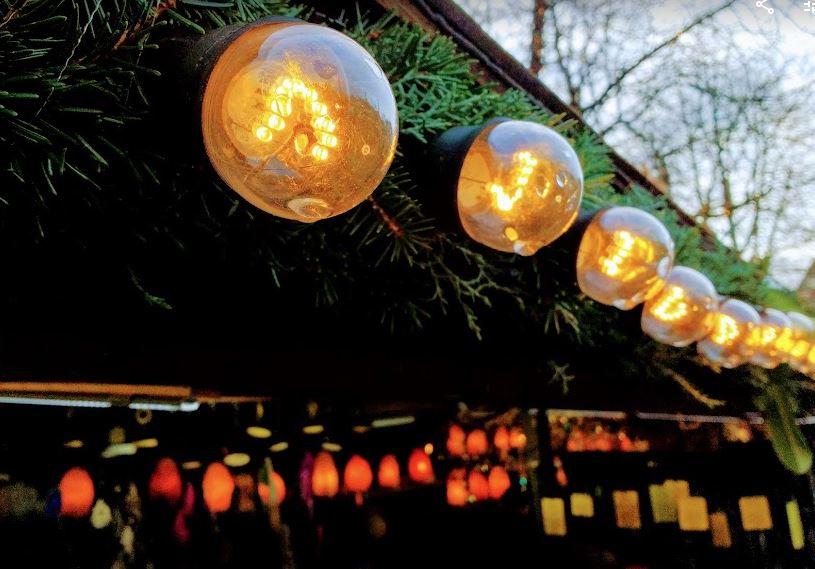
Did you know? Germany has close to 3000 Christmas markets in big cities to small villages. With that many German Xmas markets, a visit to Germany around Christmas time is a must! But where is the best place in Germany for Christmas markets?
Let us help you. Scroll down to find the very best place in Germany for Christmas markets. In our opinion, might I add.
German Christmas markets have a long tradition in Germany. Some of the oldest Christmas markets in Germany date back to before the 14th century. Christmas markets come in all shapes and sizes.
Big Cities v. Small Towns
Bigger cities may have multiple Christmas markets, some open only on weekends, others have a certain theme such as the medieval Christmas market in Esslingen, southeast of Stuttgart. Smaller towns and some villages often have a pared down version, perhaps only open on one or two weekends before Christmas.
A big city doesn’t necessarily equal the best place in Germany for Christmas markets. Take Ludwigsburg as an example. This town is north of Stuttgart and has a cosmopolitan feel to it but is by no means large. Yet, Ludwigsburg’s Christmas Market is magical.
Ludwigsburg’s Christmas Market – one of the best but less famous Christmas markets in Baden-Württemberg.
It’s set in a picturesque square surrounded by pastel colored baroque architecture. The town square lends itself perfectly to the festive activities. Compared to Nuremberg and Munich’s Christmas Markets, Ludwigsburg Christmas Market feels cosy and chic.
Our Favourite Christmas Markets
The list below is made up of four of the most magical Christmas markets in Germany. With almost 3000 markets, there’s a lot to choose from. Use our list to help you plan your trip to a German Christmas market and to make sure you visit the best place in Germany for Christmas.
So without further ado, where is the best place in Germany for Christmas markets? Click on the city to skip to the info.
The German Tradition of Christmas Markets
It is thought that the German Christmas markets originate from the Middle Ages. Christmas markets in Germany are often called the Christkindlmarkt meaning Spirit of Christmas. There are also regional variations to the name such as Dresden’s Striezelmarkt.
The markets started as a place to buy goods during advent, the run up to Christmas. The tradition spread across Germany and Europe. And now, over 600 years since the first Christmas market was noted, in Bautzen, the German Christmas market tradition has spread to Birmingham, Manchester, Chicago, and Phoenix, to name just a few.
Traditional Food & Drink at a German Christmas Market
There is a good range of stalls at most German Christmas markets. Some stalls sell Christmas decorations and candles, others sell wooden toys, but the vast majority sell food or drink. What could feel more festive than sipping on a spiced glass of Gluhwein wrapped up in your warmest coat under a cover of fairy lights?
The traditional foods sold at German Xmas markets across Germany and further afield include the well-known and well-loved Lebkuchen and Stollen, but there’s more to discover.
Speculaas (Spekulatius)
A type of spiced shortbread cookie or biscuit originating from the Rhineland. It is flat and in the shape of a windmill, animal, person, or building. The biscuits nearly always have intricate patterns on the front. Spiced with the traditional Christmas spices of cinnamon, cloves, ginger, cardamom and nutmeg.
Candied Almonds (Gebrannte Mandeln)
Almonds in a crispy caramelised, and often spiced, coating. You must try them warm from the pan. It’s a simple but festive snack to enjoy on the hoof while you browse the market or sip your hot drinks.
Sausages (Bratwurst)
Typically German. Wurst is nearly always found at every festive event across Germany. This isn’t just a stereotype. Germans care about sausages almost as much as they care about bread. Wurst and Brot are national treasures and almost part of their national identity. At Nuremberg’s Nürnberger Christkindlesmarkt, you’ll find the classic Nürnberger sausages served with bread. At Christmas markets in the state of Thuringia they’ll be serving Thuringian sausages.
Feuerzangenbowle
This is a popular and festive German tradition. Dry red wine is heated in a bowl often suspended over a burner. The wine is flavoured with traditional mulling spices.
Above the wine a big lump of sugar is mounted on a grate, this sugar is called a “Zuckerhut” in German, literally translated as sugarloaf. The sugar gets soaked in rum, it is then lit, more rum is poured over the sugar until it has melted and caramelised.
It’s fun, festive and traditional. And back in 1944 a film called Die Feuerzangenbowle was made. To this day, some German universities host screenings of the film served alongside this famous punch, at Christmastime, of course.

Dresden – Der Dresdener Striezelmarkt
Like many large cities in Germany, Dresden has multiple Christmas markets. Der Dresdener Striezelmarkt is one of the oldest German Christmas markets. It dates back to 1434 when it started as a one-day market. Today it starts before the first Sunday of advent and closes on Christmas Eve. And during this time millions of locals and tourists visit Dresden’s largest Christmas market each year.
Dresden’s Christmas market has moved on somewhat since 1434. Back in the day it was a place for Dresdeners to buy meat for Christmas. It now has 240 stands, a 14-meter tall Christmas candle pyramid and a full program of events during the week and weekend.
Food, Drinks, Decorations and Gifts
Popular stands at Dresden’s Christmas market include those selling traditionally hand-carved nutcracker, the ever-popular Dresden stollen stands, and the stalls selling Pflaumentoffel.
Pflaumentoffel is a speciality originating from Dresden’s Christmas market. Decorations shaped as chimney sweeps created from prunes and eaten after Christmas.
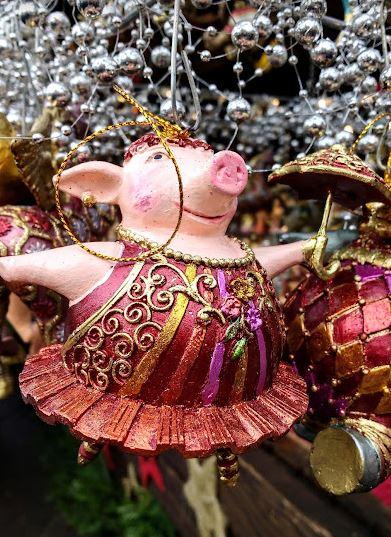
So why is Dresden the best place in Germany for Christmas?
The size, the history and the city. Der Dresdener Striezelmarkt is set on a central square called the Altmarkt. It’s a grand square in the heart of Dresden’s Old Town, the square was sympathetically reconstructed after being destroyed in February 1945. It lends itself to many events in the city. When lit up and decorated for Christmas, there couldn’t be a better place to host Dresden’s Christmas market.
The market is big enough to enjoy browsing for a good part of the day. There are events held daily. When you feel like you’ve had enough, the city of Dresden has a lot to offer. Tourist attractions include the Church of Our Lady (Frauenkirche), the Baroque palace Zwinger, and the Royal Palace.
More Information about Visiting Dresden
For more information about Der Dresdener Striezelmarkt, head to the dedicated website, there’s even a countdown to the next Christmas market in Dresden.
Dresden Travel Guide
If you’re planning a trip to Dresden, make sure you check out the Dresden travel guide. You’ll find information about where to stay, the best tourist attractions and how to get around the city.

Nuremberg - Nürnberger Christkindlesmarkt
Next on the list is Nuremberg’s Christmas market also known as the Nürnberger Christkindlesmarkt. There are no official documents to date this Christmas market. However, historians have found an object that helps date the market back to at least 1628.
This is one of the most famous Christmas markets in Germany. It opens on the Friday before the first Sunday of Advent and closes on Christmas Eve. During this time, the market welcomes over 2 million visitors.
Opening Ceremony
Those attending the first day will get to experience the “opening show”. At 17:30 a choir starts singing, the trumpets are blown, and the Christmas lights are turned on to signify it has officially opened.
The moment everyone has been waiting for is when the Christkind (a young woman with golden curls and a crown) addresses the crowd from the balcony of the Frauenkirche and delivers the poetic prologue.
Nuremberg’s famous Christmas market is set in the central square in the heart of Nuremberg’s old town. The Hauptmarkt. The grand Frauenkirche towers over the square packed with wooden stalls. The market overflows into surrounding area and down the quaint and festive half-timbered streets.
Three Markets in One
The market is made up of three markets. The Christkindlesmarkt with its traditional fares perfect for gifts including decorations, nativity sets, baked goods and candles.
The Sister Cities Market is the next area you might happen upon. This is where 24 stalls showcase goods from around the world including items from Turkey, Macedonia, Nicaragua and Italy.
And lastly, the Children’s Market makes up the final market. A miniature railway, Ferris wheel and traditional carousel can cheer up most chilly children. If you visit once the sun has gone down, the lights make it the most magical experience even for bigger kids.
More Information about Visiting Nuremberg
For more information about Nuremberg’s popular Christmas market, head over to the official website.
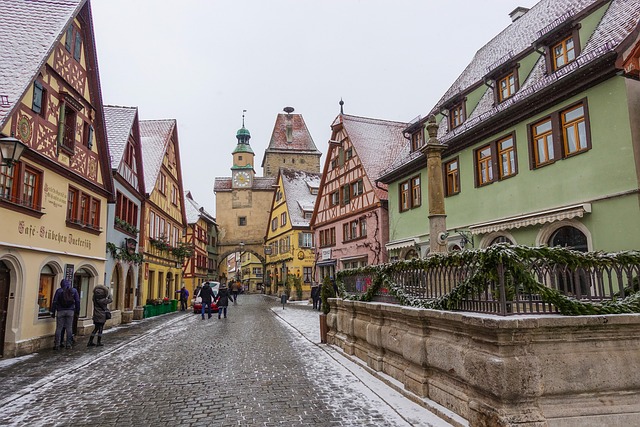
Reiterlesmarkt in Rothenburg ob der Tauber
Along the Romantic Road traversing the two southern states of Germany you’ll find Rothenburg ob der Tauber. It is unbelievably cute. Half-timbered houses dating back to 15th century. It’s a small place but it is full of charm. And that is why it’s on the list.
At Christmastime, it looks like it came straight out of our Christmas fantasies. If Hallmark made Christmas movies in Germany, this is where they’d send the lead character.
German Christmas Market History
The history of Rothenburg’s Christmas market starts back in the 15th century. It came about when Christians took a Teutonic legend about a rider taking care of dead souls and transformed it into a messenger bringing gifts to all.
And that is why Rothenburg’s Christmas Market, or the most magical Christmas market in Germany, is called the Reiterlesmarkt instead of the Christkindlmarkt.
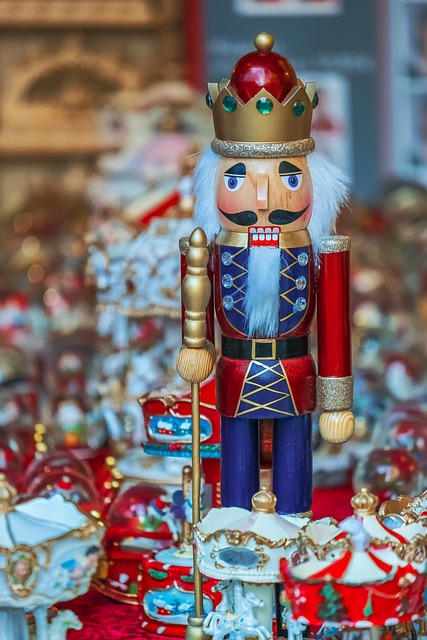
This festive German Christmas market is set in Rothenburg’s medieval Marktplatz. The central square is surrounded by colourful Renaissance facades and traditional half-timbered buildings. It opens on the last Friday before the first Sunday of Advent.
The town of Rothenburg ob der Tauber is in a region called Franconia. The region is found in the north of Bavaria. Rotherburg is close to Wurzburg, it’s a short 45-minute drive. It’s also a great day trip from Nuremberg and it takes less than 90 minutes to get there by car.
Franconian Specialities at Rothenburg’s German Christmas Market
Traditional Franconian foods to try at the Rothenburg’s Christmas market include Schneeballen, fried dough balls sprinkled with sugar and cinnamon.
A favourite of many is Flammkuchen, similar to a pizza but thinner, crispier and covered in crème fraiche, bacon and onions.
And not forgetting the white Gluhwein, considered a local speciality, this is just like its red friend and worth a try.
Why visit Rothenburg’s Christmas Market?
In a nutshell its has to be the most magical German Christmas market in the whole of Germany. The location screams of fairy-tales from our childhood.
And then there are the daily events. Father Christmas visits the market every day at 4:30pm. An advent window is opened every day at 5pm, followed by a brass band concert at 5:30pm.
If that’s not enough to keep you entertained, you can schedule a trip to the German National Christmas Museum.
More Information about Rothenburg ob der Tauber and the Reiterlesmarkt
Rothenburg ob der Tauber has a very detailed website with plenty of information about tours, events and the history of the town. It is kept up to date so it’s well-worth visiting the website if you are planning a trip to Rothenburg.

Esslingen Christmas Market and Medieval Market
Head southeast out of Stuttgart and you’ll find the pretty town of Esslingen am Neckar. The Neckar River runs alongside the city on its way up to Stuttgart. It’s a medieval town with pretty pastel-colored houses in the center, with steep vineyards surrounding it.
Esslingen Christmas Markets in the Old Town
This Christmas market is made up of two parts. The Medieval Christmas Market and the traditional Christmas market. They are hosted side by side. The markets are found in the Marktplatz, Rathausplatz and Hafenmarkt, as well as in the medieval streets themselves.
Together, the markets have around 180 stalls selling handmade gifts and decorations as well as food and drink from the region.
There is one feature loved my many that’s a little out of the ordinary. And that is the medieval version of a hot tub. Visitors to the market can take their swimmers and get merry with a drink or two in the hot tub. It’s unique and funny.
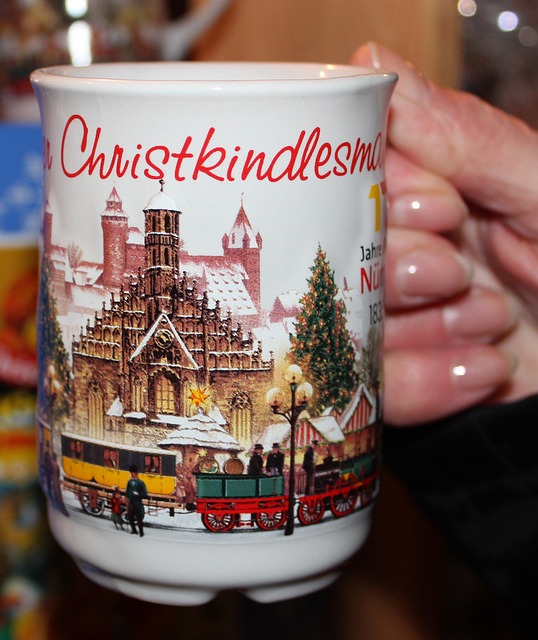
A Family Friendly Christmas Market in Germany
If you’re traveling with children, this is a good market to visit. There are games from the middle ages, candle making opportunities, and a hand-operated Ferris wheel. While the children play, the adults can enjoy sampling the sweet mead or Gluhwein.
Christmas Market Opening Times
This year (2022), the Christmas market is open from 22nd November to 22nd December. The closing time varies depending on the day, but it is open every day from 11am. Get there early to avoid the crowds at the weekend! Or, go a little later and enjoy seeing the city lit up at night.
More Information about the Christmas Markets in Esslingen
Have you visited many German Christmas markets? Tell us what you think, where is the best place for Christmas markets in Germany?

0 Comments on “Where is the Best Place in Germany for Christmas Markets?”